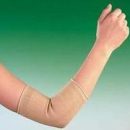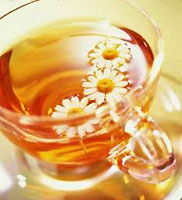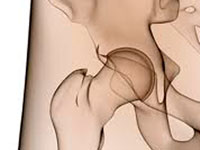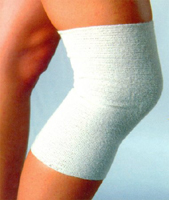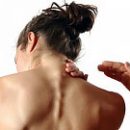What is the arthritis of the knee joint. Causes and mechanism for the development of articular pathology. Types of arthritis of the knee joint and its treatment, complications in arthritis.
Content
- Development of the pathology of the knee joint
- Signs and treatment of the arthritis of the knee joint
Arthritis is a disease of the joints, which is based on an inflammatory process. Manifests itself with pain in the area of the knee joint and difficulties when flexing and extending the legs. It can proceed to chronic shape and lead to disability, so it is important after the diagnosis to start a comprehensive treatment as soon as possible.
Development of the pathology of the knee joint
Arthritis of the knee arthritis — The pathology of the joints, which can develop as an independent disease or be a consequence of other diseases, arise as a result of their complications.
The structure of the knee joint
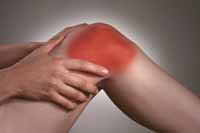
The knee joint consists of bones, intra-articular elements (meniscovers, cartilage, etc.), a ligament apparatus and a synovial shell (the inner liner of the joint). Inside there is a small amount of fluid playing the role of lubricant.
The mechanism of development of pathology in the joint
The main reason for swelling and increase in the volume of the knee joint is the accumulation of large amounts of liquid inside. Not finding out, it puts pressure on the inner walls of the joint and causes pain. In addition, in this fluid are formed in a large amount of substance, irritating intra-articular structures and provoking additional production of fluid, a closure circle. It is also possible to settle in the joint of the uric acid crystals in the form of small needles that apply micro-damage to intra-artic structures.
Causes of the knee joint arthritis
Most often arthritis is caused by the following reasons:
- Inflammatory rheumatological diseases in which intra-articular inflammation is provoked by the immune system failures.
- Osteoarthrosis — The disease of the musculoskeletal system, characteristic of people engaged in severe physical labor, and athletes.
- Post-traumatic phenomena — Dumb injuries of legs, stretching or breaking bundles and intra-articular structures.
- Cysta Baker — Liquid intra-articular formation filled with synovial fluid. May appreciate and cause serious inflammatory processes.
- Infection — Pathological microorganisms capable of provoking inflammatory processes. When identifying the pathogen and the selection of proper treatment of arthritis disappears without a trace.
- Against the background of the general disease. Oncological diseases, AIDS, tuberculosis and some other diseases can accompany arthritis.
The development of the disease contributes to the following factors:
- Increased load on the knee joint;
- metabolic disorders;
- excess body weight;
- Swimming the knee joint.
Disease varieties
Distinguish several forms of arthritis:
- reactive — It occurs with the infectious diseases not cured on time;
- rheumatoid — is formed against the background of rheumatic diseases, accompanied by strong long-term pains, is able to cause a number of complications;
- spicy — The result of the effect of an internal or external infectious stimulus may occur in purulent form;
- infectious — it develops when a fungal or viral infection is developed through blood, by means of surgical operations or intra-articular injections;
- Post travelery — arises as a result of mechanical damage to the knee joint.
Signs and treatment of the arthritis of the knee joint
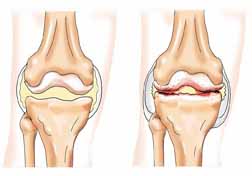
Visually, the knee joint, struck by arthritis, is very different from healthy. On the skin there are swelling, swelling and redness. For the affected area, a high temperature and a small deformation of the joint are characterized by involuntary cuts of foot muscles located near the hearth of inflammation.
Pains that occur first during exercise are gradually moving to a permanent state. Pain sensations reach the maximum value with fully dispersed or bent knee joint.
The degree of development of the disease
Symptoms differ depending on the disease stage:
- 1 degree — Minor pain, it is possible a small limited mobility of the knee;
- 2 degree — amplification of pain, difficulty of movements, swelling, swelling and redness of the knee area;
- 3 degree (deforming) — Strong pains that cause a resistant spasm of muscles, the result of which the knee deformation may appear.
Treatment of the arthritis of the knee joint
Treatment is prescribed depending on the form and stage of the disease. In most cases, anti-inflammatory drugs that reduce swelling, and painful drugs are prescribed. Sometimes non-steroidal anti-inflammatory agents may be assigned, which are introduced inside the joint. In parallel with drug treatment, it is recommended to balance nutrition and limit physical exertion. Individually, wellness exercises for knee joints can be assigned.


